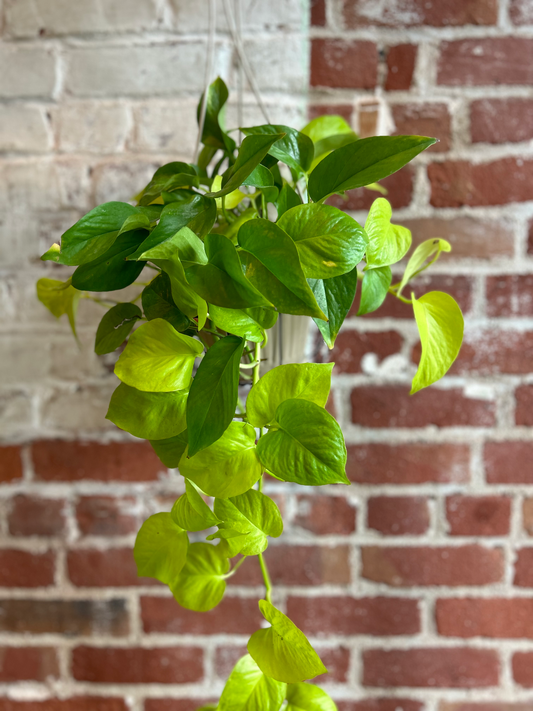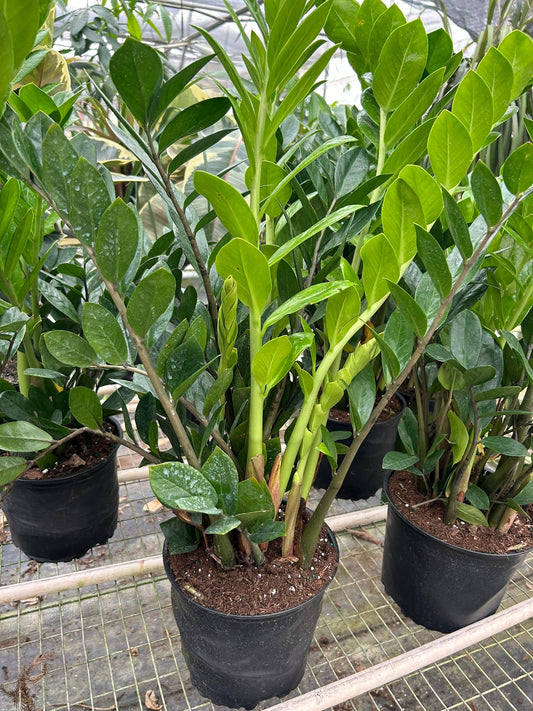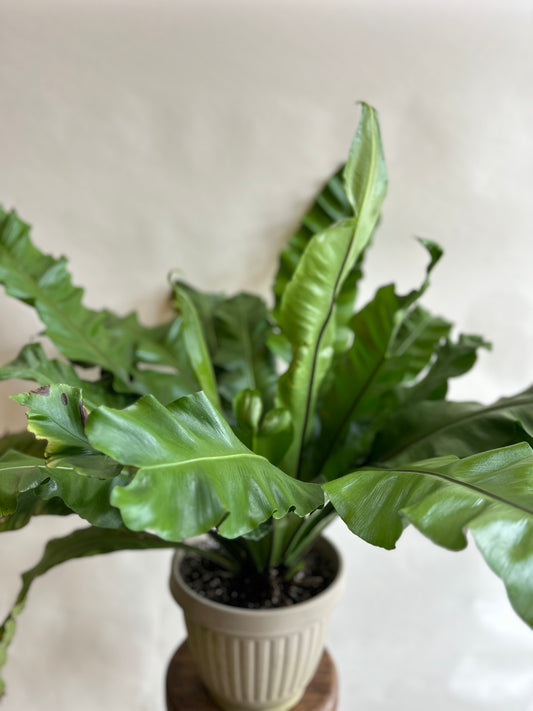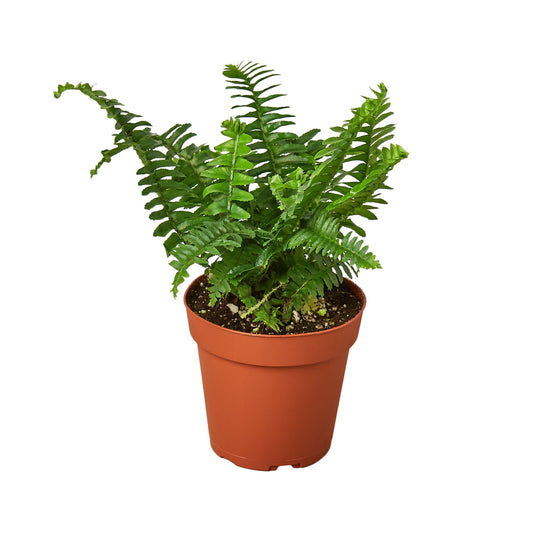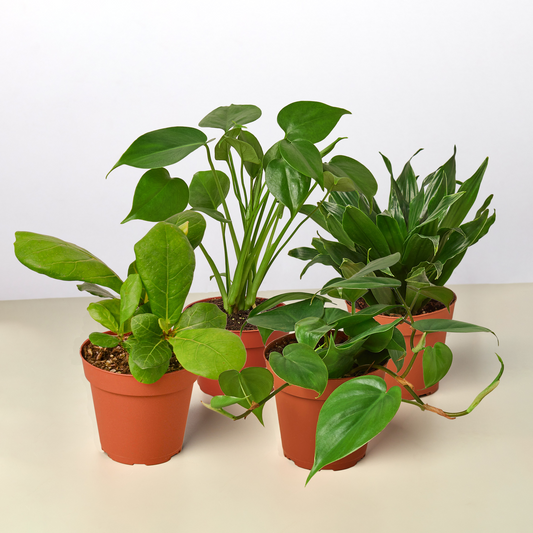Are Arrowhead Plants Toxic to Cats?
Cafe Planta Team
Arrowhead plants, with their striking foliage and easy-going nature, are popular choices for many plant lovers. Yet, if you're a cat parent, you might be wondering if these beautiful plants are safe for your furry friends. Cats tend to nibble on leaves out of curiosity or boredom, and as responsible pet owners, it's crucial to ensure our homes are safe for them.
In this article, we'll discover whether arrowhead plants pose any risks to your feline companions. We'll also explore plant care tips, alternative pet-friendly plants, and how to create a beautiful, safe environment for both your plants and pets. Let's get started!
Understanding Arrowhead Plants
Arrowhead plants, also known as Syngonium podophyllum, are beloved for their arrow-shaped leaves and vibrant colors. Native to tropical rainforests in Central and South America, these plants thrive in warm, humid environments. They can adapt to various lighting conditions, making them a versatile choice for indoor gardens.
These plants are quite forgiving, making them an ideal choice for beginners. They tolerate low to bright indirect light and only need watering when the top inch of soil feels dry. However, they do appreciate a little extra humidity, so misting them occasionally or placing them near a humidifier can keep them happy.
Despite their beauty and adaptability, arrowhead plants come with a caveat: they contain calcium oxalate crystals, which are toxic to cats and dogs. But don't worry; there are ways to keep your pets safe while still enjoying the beauty of these plants.
Are Arrowhead Plants Toxic to Cats?
Yes, arrowhead plants are indeed toxic to cats. The culprit is calcium oxalate crystals found in the plant's sap. These needle-like crystals can cause discomfort and irritation if ingested. When a curious kitty decides to take a bite, they might experience symptoms like drooling, pawing at the mouth, or vomiting.
While the effects are usually mild and non-life-threatening, it's still important to keep an eye on your pet if you suspect they've nibbled on an arrowhead plant. In most cases, the irritation subsides within a few hours, but it's always a good idea to consult with your veterinarian for advice tailored to your pet's specific needs.
To prevent any incidents, consider placing your arrowhead plants out of reach of your pets. Hanging planters or high shelves can be effective solutions. Additionally, you might want to explore safer, pet-friendly plant alternatives.
Creating a Pet-Safe Plant Environment
Balancing a love for plants with pet safety can be challenging, but it's definitely achievable. The key is to create an environment where both your plants and pets can coexist peacefully. Here are some tips to help you achieve that balance:
- Research Your Plants: Before bringing a new plant home, check if it's toxic to your pets. The ASPCA website is a great resource for this information.
- Designate Pet-Free Zones: Create specific areas in your home where your pets aren't allowed. Use these spaces to display your non-pet-friendly plants.
- Use Plant Stands and Shelves: Elevate your plants using stands or shelves to keep them out of reach. This not only protects your pets but also adds visual interest to your space.
- Incorporate Hanging Planters: Hanging plants can add a unique aesthetic to your home while keeping them safely away from curious paws.
By making a few adjustments, you can enjoy a lush indoor garden and ensure your furry friends stay safe and healthy.
Pet-Friendly Plant Alternatives
If you're concerned about the safety of arrowhead plants, there are plenty of other beautiful, non-toxic options to consider. Here are some pet-friendly plants that can add a splash of green to your home without posing a risk to your cats:
- Bamboo Palm: This plant thrives in low light and adds a tropical feel to any room.
- Boston Fern: Known for its feathery fronds, the Boston fern is a lovely, non-toxic option.
- Spider Plant: With its arching leaves and small plantlets, the spider plant is both safe and easy to care for.
- Parlor Palm: Another tropical beauty, the parlor palm is safe for pets and requires minimal care.
- Calathea: These plants boast stunning leaf patterns and are safe for cats and dogs.
These alternatives can help you cultivate a pet-friendly indoor garden that doesn’t compromise on style or safety.
How to Respond If Your Cat Eats an Arrowhead Plant
If you catch your cat nibbling on an arrowhead plant, don't panic. While the situation is concerning, there are steps you can take to help your pet:
First, gently remove any plant material from your cat’s mouth if possible. Encourage them to drink water, as this can help rinse away any remaining plant sap. Monitor your cat for symptoms like drooling, pawing at their mouth, or vomiting.
If symptoms persist or worsen, contact your veterinarian. They can provide guidance on further steps to take and help you determine if any treatment is necessary. Remember, it's always better to be cautious when it comes to your pet's health.
Incorporating Plants into Your Home's Interior Design
Plants can be more than just decorations; they can transform the look and feel of your home. Whether you have a modern apartment or a cozy cottage, incorporating plants into your design can create a warm and inviting atmosphere.
Consider using plants to fill empty corners or add height to a room. A tall plant like a fiddle leaf fig can make a statement piece, while smaller plants can be grouped together for a lush effect. Hanging plants or trailing varieties like pothos can add dimension to your space.
Don't forget the power of planters! Choose containers that complement your decor. Whether it's sleek and modern or rustic and charming, the right planter can enhance the overall aesthetic.
By thoughtfully incorporating plants into your design, you can create a beautiful, harmonious space that reflects your personal style.
Houseplant Care Tips for Busy People
Maintaining a thriving plant collection can be tricky, especially if you're juggling a busy schedule. But fear not! With a few simple strategies, you can keep your plants healthy and happy without much fuss.
First, choose low-maintenance plants that fit your lifestyle. Succulents, snake plants, and ZZ plants are great options for those who might not have time for frequent watering.
Set reminders on your phone to check on your plants. This can help you remember watering schedules and other routine care tasks. Additionally, group plants with similar care needs together, so you can tend to them more efficiently.
Consider using self-watering pots or adding a layer of mulch to retain moisture. This can reduce the frequency of watering and help your plants thrive.
By incorporating these tips into your routine, you can enjoy the benefits of an indoor garden without feeling overwhelmed.
Common Pests and Solutions
Pests can be a nuisance for houseplant owners, but with a little vigilance and some handy tips, you can keep them at bay. Here are a few common pests and how to tackle them:
- Aphids: These tiny insects can be washed off with a strong stream of water or treated with insecticidal soap.
- Spider Mites: Increase humidity around your plants or use neem oil to deter these pesky mites.
- Fungus Gnats: Allow the top layer of soil to dry out between waterings, and consider using sticky traps to catch adult gnats.
- Mealybugs: Remove these pests with a cotton swab dipped in rubbing alcohol.
Regularly inspect your plants to catch any issues early. With prompt action, you can maintain a healthy and pest-free indoor garden.
Final Thoughts
In summary, while arrowhead plants are toxic to cats, with careful placement and some pet-friendly alternatives, you can cultivate a beautiful and safe indoor garden. Remember to keep toxic plants out of reach, and consider exploring non-toxic options that are equally stunning.
At Cafe Planta, we're passionate about helping you care for your plants. Whether you're looking for new additions to your collection or need advice on plant care, we’re here to help. Feel free to reach out to us via email or Instagram. Together, we can create a thriving, green haven in your home.


